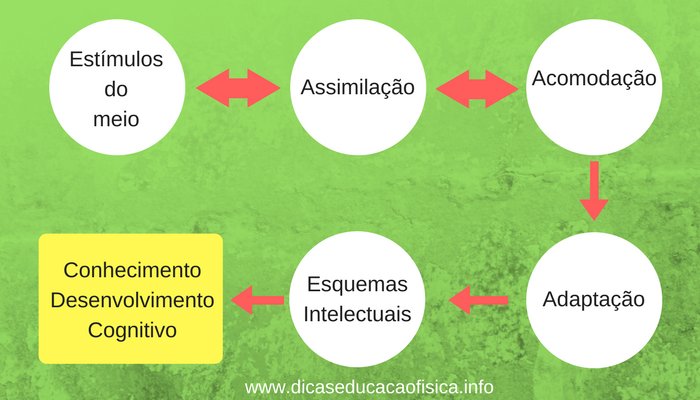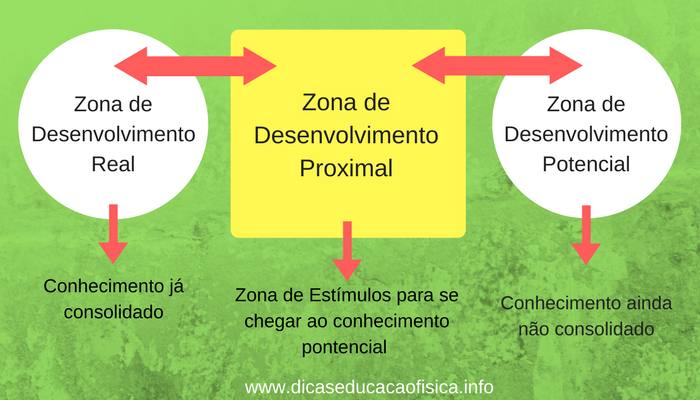Introduction: Constructivist Approach in Physical Education
To talk about the Constructivist Approach in School Physical Education, we need to understand the concepts related to the Constructivist ideas of Piaget and Vygotsky, but first, a reflection by the main thinker of the Constructivist Pedagogical Approach to Physical Education in Brazil, Professor João Batista Freirewho says:
“Sometimes the school system lacks vision, sometimes it lacks scruples. It is difficult to explain the immobility to which children are subjected when they enter school. Even if it were possible to prove (and it isn’t) that a person learns better when they are still and silent, this couldn’t be imposed suddenly and violently from the first day of school.”
Freire (1994, p.12)
Concepts related to the Constructivist Approach in Physical Education
Jean Piaget’s Construction of Knowledge
According to the French psychologist and biologist Jean Piaget, the development of intelligence or the construction of knowledge takes place through adaptation, which occurs from the individual’s interaction with stimuli received from the environment, which generates a process of assimilation and accommodation and creates a schema, which is an intellectual structure for solving problems.
Example: During a game of soccer, a child gets to know the ball, in other words, he receives a stimulus from the environment, interacts with it, assimilates it, accommodates it and creates a schema about the ball, which is an object that can be kicked. At another time, this same child comes across a basketball. Because of the similarity, the child will assimilate and use the schema about the ball, which he has already accommodated, and will kick the basketball.
At this point, interaction with the environment begins, and an adult/teacher explains that you don’t kick the ball, you play with your hands. Through this stimulus given by the adult, the child will accommodate and assimilate a new scheme about the basketball.
- See also – Physical Education in Brazil
Piaget’s Stages of Intellectual Development
Piaget also divided intellectual development into four stages:
- Sensorimotor (0 – 2 years): stage of practical intelligence, i.e. the child picks up what is in their hands, suckles what is put in their mouth and sees what is in front of their eyes. As they develop, they can see, pick up and put in their mouths.
- Pre-operative (2 – 7.8 years): stage of symbolic intelligence where the child is able to replace an object or event with a representation. At this stage, the child is egocentric, unable to put themselves in the other person’s shoes, the child wants an explanation for everything, can simulate a situation, is carried away by appearances without giving importance to the facts.
- Operative-concrete (8 – 11 years): the child develops notions of time, space, speed, order, chance, relates different aspects and is able to abstract data from reality.
- Formal-operational (8 – 14 years old): the child is now capable of total abstraction, without limitations, is already able to think logically, formulate hypotheses and seek solutions, without relying solely on observing reality.
- See also – Anaul Physical Education Planning with BNCC
The Construction of Knowledge according to Vygotsky
Vygotsky suggests that the development of intelligence depends much more on interactions with people in the child’s world and the tools that culture provides to promote thinking. For him, children learn not through solitary exploration of the world, but by appropriating or “taking for themselves” the ways of acting offered by their culture.
For Vygostky, teachers need to do more than simply arrange the environment so that students can discover things on their own, but rather act in the child’s Zone of Proximal Development, a stage in which the child cannot solve a problem on their own, but can succeed with the guidance of an adult.
Students should be guided by explanations, demonstrations and working with other classmates. In addition, students should be encouraged to use language to organize their thinking and to talk about what they are trying to achieve. Dialogue and discussion are important ways of learning.
Objective of the Constructivist Approach in Physical Education
The objective of the Constructivist Approach to Physical Education is the development of skills that allow one to express oneself in the world, through interaction with the environment, with a focus on creating conflicts and solving motor problems.
Methodology of the Constructivist Approach in Physical Education
In the Constructivist Approach to Physical Education, the teacher must take into account the knowledge that the student already possesses, which they have acquired through interaction with the social and cultural environment in which they live.
Based on the student’s interests, the teacher must create conflicts, show other points of view, suggest other concepts, create problems to be solved, and through the student’s interaction with the environment (activities, games, play, sports, space, accessories, other students and the teacher) they will develop knowledge and motor, affective and cognitive skills.
The Student in the Constructivist Approach to Physical Education
The student is the active participant in the learning process; they must be encouraged to interact with the environment, solve problems, assimilate, accommodate and create new intellectual schemes and new skills.
The Teacher in the Constructivist Approach to Physical Education
The teacher is the facilitator, the mediator of the learning process, and should not interfere in the solution of problems created by the students.
Assessment in the Constructivist Approach to Physical Education
Assessment in the Constructivist Approach to Physical Education is non-punitive and linked to the process of building knowledge or developing skills; it is not standardized, seeking a certain ideal result. In this way, assessment takes into account the student’s initial stage of development, considering mistakes to be part of the learning process, rather than condemning the student. The process of self-assessment can be used.
- Read also ⇒ The Developmental Physical Education Approach
Lesson Plan: Constructivist Approach in Physical Education
Let’s draw up a lesson plan below for a 6th grade class.
Theme
Futsal (to take advantage of the students’ interest in soccer).
Objective
Developing collective play and strategy; developing the ability to pass and shoot with both legs; developing emotional control during a competitive activity (note that the objectives of this lesson include the development of cognitive, motor and affective-social skills).
Methodology
Part 1: Students organize themselves into teams for a normal Futsal game (students’ prior knowledge).
Part 2: After a few minutes, the teacher stops the game and explains a new rule, that all players need to touch the ball so that the team can try to score a goal (the teacher has created a conflict between the student’s previous knowledge and a new rule that needs to be respected, i.e. the students need to solve this problem collectively).
Part 3: After a few minutes, the teacher stops the game and gives the students from each team time to discuss a collective strategy to solve the problem created by the new rule (the students have now used language to express themselves, they will need to use existing cognitive schemas or assimilate and accommodate new cognitive schemas through interaction with their peers).
Part 4: After returning to the game, the students now have to solve a new problem, now they can only touch the ball with the leg that isn’t the “good” one, i.e. right-handed players have to play with their left leg and left-handed players with their right leg (the students have now experienced a motor challenge, they had to develop the motor skill of passing and kicking the ball with the leg that isn’t the good one).
Important! At all times during the lesson, the teacher should be observing and mediating, giving guidance to help the students develop the skills and solve the problems.
Final part of the lesson
At the end of the lesson, the teacher should talk to the students about the activities carried out in the lesson, so that the students use verbal language to express themselves about the difficulties they encountered and how they solved the problems.

